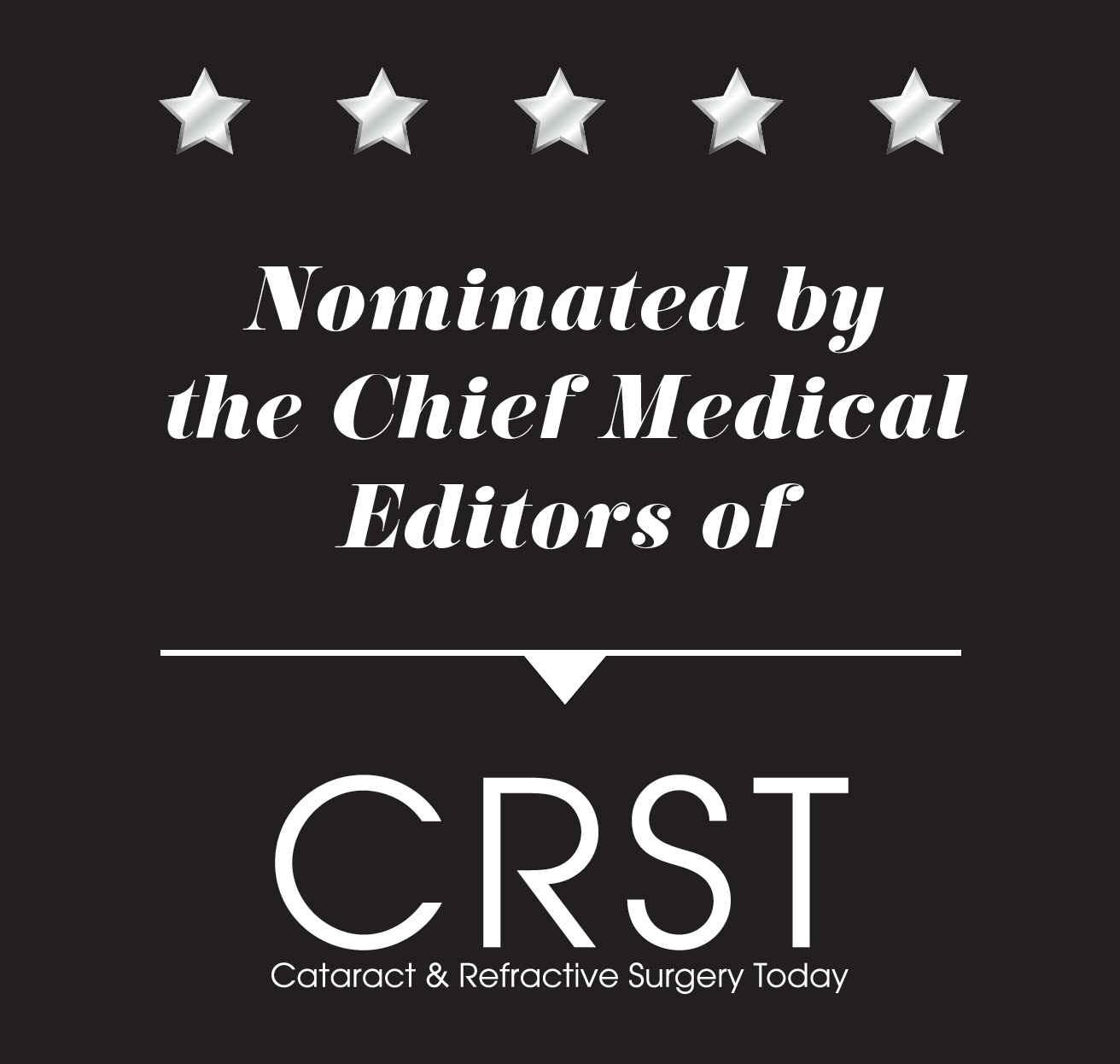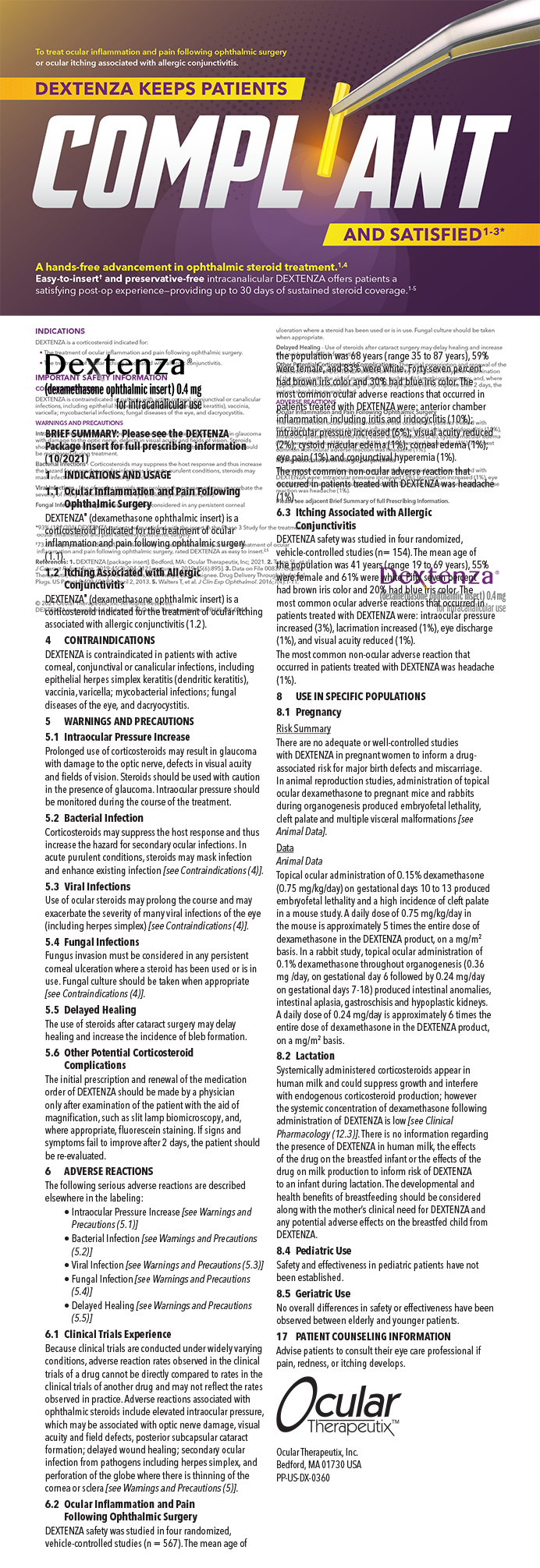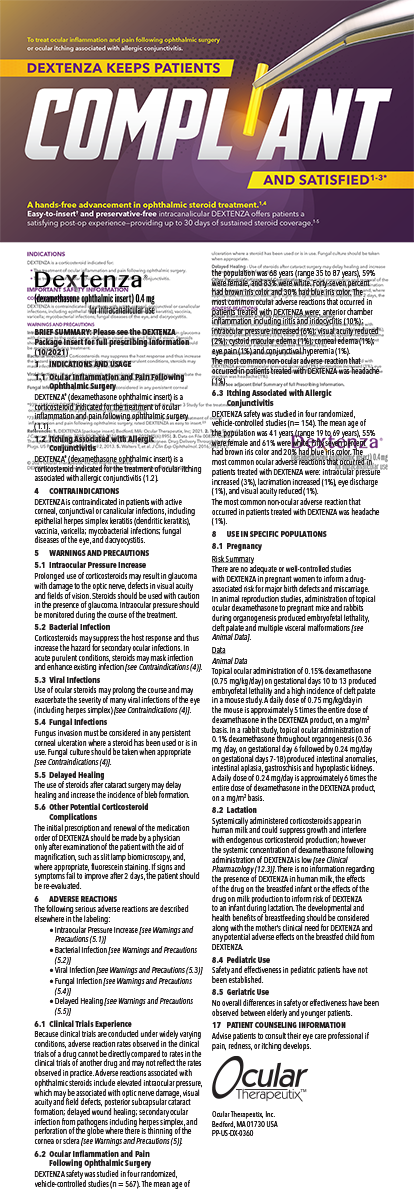Dr. Malyugin, Professor of Ophthalmology and Deputy Director General at the S. Fyodorov Eye Microsurgery Federal State Institution in Moscow, Russia, is an internationally recognized expert in advanced cataract and corneal surgeries. In this interview, he explains how he pioneered the Malyugin Ring, a device for pupil expansion, and shares why it’s best to keep your eyes and your mind open to the possibilities around you.
Interviewed by Laura Straub, CRST/CRST Europe Editor-in-Chief

BMC: Who or what drew you to ophthalmology?
Boris Malyugin, MD, PhD: I’m from a medical family. My grandmother, grandfather, father, and mother are all doctors. So from the beginning, I was pretty sure that I would be a doctor. The biggest challenge for me was not the choice of whether to be a doctor, but rather which medical profession I would pursue. When I met Svyatoslav Fyodorov, MD, he was chairman of the ophthalmology department in my university. I was impressed by his lecture during the introduction to the ophthalmology course, and subsequently I was able to visit his clinic and was attracted to the specialty. You could say I was first attracted to the profession by Professor Fyodorov’s personality and, as a second step, I was attracted by ophthalmology itself.
BMC: In addition to Professor Fyodorov, who were some of your biggest influences as you were training and studying to become an ophthalmologist?
Malyugin: I should also mention Professor Zinaida Moroz. She was chief of the corneal transplant department and my mentor for many years. I spent a few years in that department at the beginning of my tenure, where I fell in love with corneal and anterior segment surgeries. Professor Moroz was my surgical mentor.
BMC: It’s been a decade since the Malyugin Ring (MicroSurgical Technology; MST) was introduced. How did you come to design the device, and what was the process you went through working with the manufacturer to make it available on a wide scale?
Malyugin: There are many things around us, and we must keep our eyes wide open to see them. The idea for the device came from the IOLs that we routinely use in the clinic. They have smooth looped haptic elements that, you might say, look more or less like the corners of a Malyugin Ring. Sometimes you catch the iris or the capsule with the haptic loop. This gave me the idea that I could use a similar mechanism or principle for other purposes.
First, I designed an IOL that can be fixated on the lens anterior capsulorrhexis. Then I came up with the idea of designing the device that is now known as the Malyugin Ring. For some time I did my best to find a partner in industry to develop the product, and one of my well-known colleagues introduced me to MST. The company proved to be a reliable partner fully committed to innovative and quality products. Larry Laks was the chief of the company at that time; we found common ground, and we began our cooperation at that point. That was, I believe, in 2006—more than 12 years ago.
BMC: Was there anything about
your initial design that was
changed during the process of working with MST?
Malyugin: There were several initial designs, and we carefully evaluated different models, playing with the sizes, the material, and also with the injectors and holders. A lot of engineering went into it, and a lot of artwork. MST made multiple prototypes in order to arrive at the best solution, and I tried them all. It was quite a long way between the concept and the final product you see now.
BMC: Ultimately, do you think that collaborating with the company helped to make the product stronger and better for surgical purposes?
Malyugin: I think it’s important for the innovator to find a good partner in industry. It’s a privilege, actually, to be able to achieve a successful partnership like this.
As a surgeon, you can help a certain number of people—maybe hundreds or thousands. But when you work on a technology, then this technology can become available all over the world, so you help many more people—hundreds of thousands or even millions. That is extremely rewarding. I have a very good feeling about the partnerships I have participated in.
I also have partnerships with other doctors who have their own ideas, and I enjoy trying to help them develop these ideas into products. It is important to do this for the future of our profession.
BMC: Is there anything about the device that didn’t work out the
way you planned? Or are there situations where it can be used that you didn’t foresee when you first conceived it?
Malyugin: The primary challenge was finding the right material. Despite the size, the width, and the dimensions being similar, different materials can behave biomechanically in different and unpredictable manners. It was interesting for me to see how the materials acted and how we chose the right material that we ended up using in the device.
Also, it was great to witness, when other surgeons started using the device, how many of them came up with technical and innovative ideas for how to use it better and for how to modify techniques, the injection system, and so forth. It was like having this collective mind to help me improve the project and make it even better.
The input from users was valuable, and I was not expecting that aspect of creating a new product. You think that you’re doing your best on your own, but then other engaging minds make these brilliant suggestions. Also, you think of your invention as a finished product, and then you learn that there are many ways it can be further improved.
BMC: What motivates you to keep innovating surgical procedures and technologies?
Malyugin: Ophthalmic surgery itself is a challenge. It’s challenging because you deal with a certain number of routine cases, and then suddenly a routine case unexpectedly becomes an unusual case. But there is another scenario, when at the beginning of the case you see that it is going to be challenging. And, as a surgeon, you must react to the surgical environment, right?
That feeling of change and challenge engages me. It gives me the source and the motivation for innovation. I want to improve—I actually want to be able to flow with challenges, and I want to overcome them. That is a big motivator for me.
The other motivator is that I always want to do my best to help the patient. I want to do whatever is needed to make the surgery perfect. That drives me to create something to help me accomplish that. I believe this is a challenge to the profession, and it is what keeps me innovating in the surgical world to help make challenging procedures more manageable.
BMC: You are a busy person. You’re doing surgeries, keeping up with technologies, and innovating, but you’re also a medical editor or on the editorial board of several publications, including CRST Europe. How does staying involved with these publications influence your practice of ophthalmology, and what have you gained from being in these positions?
Malyugin: Our profession is advancing rapidly, so we have to keep up with the latest innovations and ideas, which are coming up all the time. So I believe that being on editorial board helps to keep up with advances in technology. This is important because there is so much that is going on, and to be a good doctor—a good surgeon—you have to be at the leading edge of progress.
Also, it is important to teach and to share your knowledge. I believe, in medicine in general and in surgery in particular, the skills transfer and peer-to-peer communication and education are very important. This is how we develop our profession, and this is how we bring up new professionals and new leaders. That is the process that should be done constantly.
Also, it’s interesting to get to know the many bright people who are in our profession. Brilliant minds like those I work with are filled with clever ideas. Sometimes you read an article and you wonder, “Why didn’t I think of that? This idea is so brilliant.” I love to read the ideas of others to help me keep up with these innovations.
BMC: What passions do you have outside the office? What is your typical day like once you’re done working?
Malyugin: Actually, I’m a workaholic—I work all the time. That’s both an unfortunate and fortunate sides of my profession. I work at home, I work at the office, I work in the laboratory. But at the same time, I never get bored with ophthalmology because I really love it.
As for the other activities, I also love to be in the countryside, to be out in nature when I’m not inside working. Swimming and mountain skiing are some of my passions. I also love hunting. This is an old tradition in Russia, and it is a way to get close to nature.
I also love to be with my children. I have 5-year-old twins, a boy and a girl, and I have another boy who is 11 months old. It’s an exciting time. I think being with family and watching the kids growing is one of the most rewarding aspects of life. The most important thing that we can do in our life is help our children to choose good vocations, to find out what kinds of personalities they have, and to give them opportunities to choose what kind of sport they like and what area or field they want to study. I’m trying to provide them with access to everything, to see what they will show an interest in, and then to give them the opportunity to be involved in those areas they would love to pursue. That’s a really interesting development that I will be enjoying in the years to come.
BMC: What is one thing you’d like to accomplish in your personal life in the next 5 years?
Malyugin: I love my profession. I love being involved in everything I am now doing. My professional field will continue to be interesting as I make and maintain contacts with people all over the world, to teach, to learn, and to innovate. These are all exciting aspects of my personal and professional life.
Regarding my personal life, I would like to find more time to be with my family, especially my kids. I regret having to take so much time away from my family due to work and travel commitments. My family is one of the passions in my life. I want my kids to be proud of me, and I want to show them the world. I want to show them how diverse the world is and provide a broad view of what is going on all over the globe. That is important. When you see the diversity of the world and of countries, the conditions under which people live and how people work, it gives you a very open mind—a bold mind. I believe that if you try to absorb the best of everything, and keep your eyes always open, you will never be tired of your life.
I’ll be happy to continue to learn from my friends and colleagues. You have to do it all your life, and that’s one of the most exciting things.
BMC: If you had to nominate one creative mind in ophthalmology, whom would it be and why?
Malyugin: This is a hard question because I know so many bright people who I admire and from whom I am still learning. To choose just one from among them is probably almost impossible. From among my US friends, I would have to mention David F. Chang, MD, whom I love very much and whose personality I admire. Robert H. Osher, MD, is another person I greatly admire. Of my European colleagues, there are also too many to choose just one. Marie-José Tassignon, MD, PhD, and Beatrice Cochener, MD, PhD, aren’t just nice women and active surgeons, but also brilliant and sharp minds.
For me, it’s hard to identify just one person. There are so many people I admire and hope to be involved with for years to come.




